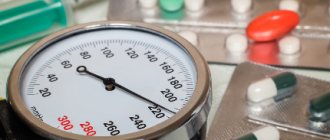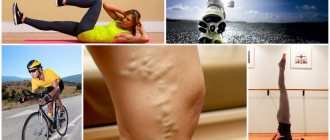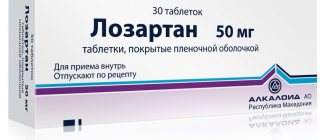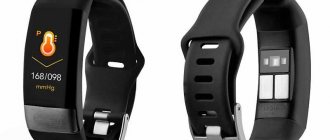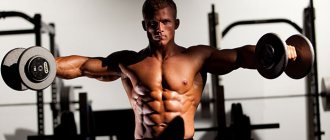What workouts will help reduce blood pressure?
To begin with, it must be said that not all physical activity will help normalize blood pressure. Some really useful types of training and exercises for hypertension include:
- walking,
- Nordic walking,
- easy jogging,
- swimming and water aerobics,
- some yoga asanas,
- low intensity aerobics,
- bicycle rides,
- skiing,
- breathing exercises,
- therapeutic exercises.
With their help, you can not only normalize your blood pressure (BP), but also avoid similar problems in the future. However, this is relevant only with a slight increase in blood pressure and stage 1 hypertension. You can read more about the classification of hypertension in this article.
For experienced hypertensive patients, there are special breathing techniques and physical therapy (PT). We will talk about them further.
Types of loads
All exercises can be divided into several groups:
- Isotonic (cardio training) is a group of exercises where different muscle groups of the body are simultaneously used. Due to the contraction of the muscles of the arms and legs, the need for oxygen increases, which leads to an increase in the frequency of breathing and heartbeat. Cardio training involves all major muscle groups, strengthens the respiratory system, and helps reduce weight. The most popular types of cardio training: running, swimming, walking, cycling, training using an orbit track, jumping rope.
- Isometric (strength) - designed to increase muscle mass of a separate group of skeletal muscles. Due to the high-intensity load on a specific muscle group, active blood flow to this area is achieved, which is enriched with oxygen and nutrients. This helps restore the structure of muscle fibers and increase the size of a specific muscle group. Strength exercises for hypertension are not used because they require physical fitness and can sharply increase blood pressure. These include squats, elbow planks (horizontal), lunges. Strength exercises are often performed with weights: kettlebells, barbells and other sports equipment.
- Statistical – cause an increase in the tone of a specific muscle group by holding the body in a certain position. Types of static loads include yoga and muscle stretching exercises.
- Dynamic - muscle tension is achieved by performing a series of movements.
- Respiratory – lead to an increase in the tone of specific muscle groups by performing certain breathing movements. Such loads are suitable for high blood pressure, since the main load is transferred to the respiratory system. The enrichment of blood with oxygen is achieved here through the active use of the reserve capacities of the lungs. These include yoga and special exercise therapy complexes.
Exercises to lower blood pressure include breathing and gentle cardio exercises.
What are the benefits of exercise for hypertension?
Correct and regular exercise therapy for hypertension contributes to:
- increasing the tone and endurance of the cardiovascular system;
- normalization of blood circulation and prevention of atherosclerosis;
- reduction or removal of painful symptoms (heaviness and pain in the head, tinnitus, chest tightness, etc.);
- oxygen saturation of organs, which is very important for the prevention of stroke and heart attack;
- prevention of respiratory system diseases;
- relieving psychological stress, improving mood;
- normalization of sleep;
- improving performance.
Treatment using the Bubnovsky method
Exercises using the Bubnovsky method allow people to avoid serious problems associated with hypertension. Long-term exposure to the disease has a negative impact on the cardiovascular system, often leading to heart attacks and strokes.
If you regularly practice according to Bubnovsky, you can avoid problems with blood circulation and firmly stabilize blood pressure.
Typically, breathing exercises invented by Bubnovsky are used before completing the main program, or in order to learn how to breathe correctly. However, they are also effective in treating hypertension. You can see their technique below:
- Sitting on your knees with your back straight, you need to rise, taking a deep breath, and as you exhale, slowly return to the starting position. Having actually descended to the base position, you should suddenly release the air from yourself. At this moment, the muscles, including the heart, relax.
- To cleanse the body, you need to take a deep breath and at the same time clench your lips tightly. Keeping your cheeks tense, as you exhale you should try to make the sound “pf”, while your stomach should gradually retract towards the spine. The final result will depend on the frequency of air release and the degree of tension.
Basically, such exercises are used as preparation for joint gymnastics, but they have a good effect on the body as a whole, so even hypertensive patients can use them. To eliminate undesirable consequences, it is better to consult a specialist before performing the complex.
Breathing correctly is important not only for a full workout, but also for normalizing blood pressure and blood circulation in general. If you learn techniques that include breathing exercises, you can reduce the amount of medications you take for hypertension and improve your overall standing. To do this, it will be enough to spend 10-15 minutes studying every day.
Who is contraindicated for therapeutic exercises for hypertension?
It is strictly forbidden to perform even the simplest exercises for hypertension in the following cases:
- during attacks of angina pectoris;
- with severe arrhythmia;
- immediately after the onset of a hypertensive crisis;
- with pressure readings of 200/110 and above.
It is recommended to stop training immediately if the following symptoms appear:
- accelerated heartbeat;
- dizziness;
- attacks of nausea;
- discomfort in the chest area;
- tinnitus;
- the appearance of black dots, circles and other visual abnormalities before the eyes;
- numbness of the limbs, neck, face;
- severe shortness of breath.
In any case, you can start such activities only after preliminary consultation with your doctor.
What exercises should you not do if you have hypertension?
There are a number of exercises that a person diagnosed with chronic hypertension should forget about until better times. Here is their list:
- any strength exercises with weights;
- static (in which you need to remain in a motionless position for a long time, tensing your muscles);
- performed at an accelerated pace;
- in which it is necessary to do deep bends, as well as excessively load the cervical spine;
- in which it is necessary to throw back the head strongly or raise the legs above its level;
- in which it is necessary to make sudden movements (jumping, quick squats, throwing a projectile, etc.);
- sprint running;
- climbing stairs;
- climbing a rope.
Recommendations for performing gymnastics for hypertension
When conducting this type of exercise, it is very important to adhere to the following rules:
- Therapeutic training sessions should last no longer than 15–20 minutes. Performed for preventive purposes – from 40 to 60 minutes. However, in any case, it is better to start with short sessions.
- It is better to alternate breathing exercises with physical exercises.
- All exercises for hypertension should be performed in a smooth rhythm, without straining the muscles more than necessary.
- The increase in load should occur gradually.
- You need to train regularly (ideally every other day).
- Try to put less stress on your upper body (especially the neck and shoulder area). But extra work won’t hurt your legs.
- It’s better to start with the simplest elements, and as you become more trained and feel normal, you can complicate the training with exercises with your own weight (squats, incline push-ups, lunges, etc.).
- For hypertension stages 2 and 3, exercise therapy is allowed only in a lying or sitting position
A set of basic exercises for the treatment of hypertension
First, let's look at a standard set of exercises for hypertension. Many of them can be done right in bed.
- Lie on your back and spread your arms to the sides. Bend your knees and tilt them first to the right, then to the left while turning your head in the opposite direction. Perform the described line of actions 4–6 times.
- Another simple exercise for hypertension that can be done without getting out of bed. Starting position: lying on your back, arms extended along the body. As you inhale, bend your right leg at the knee with a smooth sliding movement, then as you exhale, without lifting it from the surface of the bed, return it to its original position. Repeat 4-6 times on each leg.
- Without changing the starting position, bend both legs at the knees. As you inhale, raise your right hand and as you exhale, stretch it towards your left knee. Then vice versa. There is no need to lift your entire body - just your head and shoulders. Repeat 5 times on each side.
- If hypertension has not sentenced you to bed rest, move to a chair. We take a standard sitting position, placing our palms on our knees. As you inhale, spread your elbows to the sides and as you exhale, bend forward. Return to the starting position and repeat the exercise 5 times.
- Sitting on a chair, clasp your right knee with your hands and, while inhaling, slowly pull it towards your chest. Then, as you exhale, gently lower it to the starting position and repeat the same with your left knee. Perform 4-6 times on each leg.
- Without getting up from your chair, extend your arms along your body. As you inhale, raise your right shoulder while lowering your left. As you exhale, return to the starting position and repeat the same in reverse order. Number of repetitions: 4-6 on each side.
If you perform even 2-3 of the listed exercises correctly, you will definitely feel relief.
Breathing exercises for hypertension
Exercising with high blood pressure in older people can be fraught with various complications. In addition, in old age, as a rule, joint mobility leaves much to be desired. In such a case, we have selected several simple breathing techniques that will help normalize blood pressure without much effort.
- This exercise for hypertension can be done standing or sitting. It is performed in several stages:
- place your hands on your stomach and begin to slowly “inflate” it, taking a long breath;
- through the nose, draw in air through the chest, slightly moving it forward;
- hold your breath for 5–7 seconds;
- slowly release air through your nose, first (relatively) from the stomach, and then from the lungs;
- after pumping out the air, hold your breath for another 8-10 seconds;
- rest for 1–1.5 minutes, restoring your breathing, and repeat the exercise 2 more times.
- The following exercise for hypertension is performed according to a similar principle, but with a number of differences. Firstly, there is no need to hold your breath after taking in air. Secondly, the exhalation should be very long (2 times longer than the inhalation). And thirdly, breathing cycles are performed one after another, without breaks.
- This exercise is also carried out in stages:
- press the tip of your tongue to the roof of your mouth and take a deep breath through your nose, “pumping” air first into your stomach, then into your chest;
- at the peak of inhalation, bring your shoulder blades together, as if spreading your wings;
- hold your breath for 5–7 seconds;
- slowly pump out the air first from the stomach, then from the lungs;
- at the peak of exhalation, lower your chin to your chest, bend your back and hold your breath for another 20–40 seconds;
- rest for 1 minute and repeat the exercise again.
Benefits of physical activity
By performing simple physical therapy exercises, you can highlight the positive aspects for your health:
- Simple exercises help normalize the functioning of the heart and blood vessels, and increase the capabilities of the respiratory system. The elasticity of blood vessels improves, and the amount of “bad” cholesterol decreases.
- Metabolic processes are improved, harmful metabolic products are eliminated faster, and the load on the kidneys is reduced.
- The immune system is strengthened, which is also the prevention of seasonal colds.
- Thanks to deep and rapid breathing during exercise, lung ventilation improves.
- Exercising is an excellent way to prevent constipation.
- Fat tissue is gradually replaced by muscle tissue, and weight returns to normal.
- Increasing physical activity promotes healthy sleep and prevents stress.
- Joints become more elastic, bones become stronger.
- Memory improves by improving oxygen supply to the brain.
- Women endure menopause more easily, while men maintain potency throughout their lives.
Strelnikova’s gymnastics for hypertension
One of the classic methods of combating high blood pressure is breathing exercises, created by the Soviet opera singer and vocal teacher A. N. Strelnikova. Here are some useful exercises for hypertension from this complex.
Head turns
This is a very good exercise for the neck against hypertension. However, it is contraindicated for people with cervical osteochondrosis and other similar disorders. As you inhale, sharply turn your head alternately to the right and left, without long pauses in each position. Exhale through the mouth. After completing 8–10 repetitions, rest for a few seconds. The total number of approaches can reach 10–12.
Ears
This exercise is performed similarly to the previous one, with the only difference that the head should not be turned, but tilted alternately to the right and left shoulder. With each movement, take a deep breath through your nose, then exhale through your mouth. Repeat 8–10 times in 10–12 approaches with breaks.
Hug yourself
We stand up straight, placing our arms bent at the elbows at chest level. As we inhale, we quickly hug ourselves, and as we exhale, we relax. It is very important that at the moment of hugging, the arms do not cross, but are parallel to each other. Repeat 8-10 times.
Cat before jumping
We stand up straight, bring our feet together (but do not touch each other), stretch our arms along the body. While inhaling, we squat sharply, but not low, and at the same time slightly turn our body to the right. We bend our arms at the elbows, clench our palms into fists. Imagine yourself as a cat, grouped up to rush after a careless mouse.
After this, we exhale slowly and smoothly straighten up. Repeat 8 times on each side.
Water pumping Another fairly effective exercise for hypertension. The starting position remains unchanged. As you inhale, we bend forward quickly, rounding your back. There is no need to strain your arms, shoulders and neck. As you exhale, smoothly straighten up. Repeat 10 times in 2-3 approaches with breaks.
Effects of breathing on blood pressure
Pressure breathing exercises can complement almost any treatment regimen and speed up a person’s recovery. Today the blood pressure norm is set at 120/80 mm Hg. Art., but the individual characteristics of the body can lead to slight deviations. Within normal limits in medicine, pressure is noted to be 10 mm Hg higher or lower. Art. from the norm. Pathologies more than 10 mm Hg. Art. should alert and lead to timely treatment.
Help in reducing blood pressure is provided by breathing exercises, but the basis of therapy should be medications and adherence to the basic rules of healthy living. Many experts recommend expanding drug therapy with breathing, because the recovery process will go faster. Special exercises have a beneficial effect on vascular tone, the rhythm and quality of heart contractions, and the function of the brain and nervous system.
Strelnikova’s gymnastics for hypertension - a type of treatment designed to lower blood pressure
Breathing exercises allow you to:
- restore quality blood circulation;
- fill the blood with oxygen and eliminate hypoxia;
- improve heart function and heart rate.
With prolonged use of breathing exercises, heart function significantly improves, which largely affects blood pressure. Additionally, work in other organs and systems is restored.
Exercise therapy for hypertension: a set of exercises with a stick
To perform such gymnastics for hypertension, ideally you need a special weighted fitness stick weighing 1–2 kg. However, in the absence of one, any available tool with a length of 0.9 to 1.5 meters (for example, a mop) will do.
- We stand straight, feet shoulder-width apart. We hold the stick with a regular grip with our arms extended downwards. As you inhale, lift the projectile up and at the same time move your right leg back. As you exhale, we return to the starting position. The next stage is that, in parallel with lifting the stick, we move our right leg to the side and slightly tilt our torso in the same direction. At the third stage, we twist the torso alternately to the right and to the left. Each of these elements is done 4 times in 2 approaches on each leg/side.
- We do not change the starting position, but the projectile should not touch the hips. As you inhale, raise your right knee, touching it to the stick, and as you exhale, lower it. Then we repeat the same actions with the second leg. We perform 5 repetitions on each leg in 2 approaches.
- To perform this exercise with hypertension, the stick must be placed behind your back and taken with a reverse grip (thumb up) a little further from the edges. As you inhale, we rise on our toes and at the same time move our arms with the projectile back. As you exhale, we return to the starting position. Repeat 5-6 times in 2 approaches.
- We place the stick vertically in front of us and place both palms on it, one on top of the other. As you inhale, we rise up on your toes, as you exhale, we lower ourselves back down and perform a squat at half the amplitude, spreading our knees to the sides. Repeat 5-8 times in 2 approaches.
Additional recommendations
Exercise therapy for hypertension is only one of the components of complex therapy for this disease. You need to understand that a persistent increase in pressure is caused, first of all, by a decrease in vascular tone, so this measure is necessary. And reducing blood pressure with pills means fighting your own body. It is very important to support the organs of the cardiovascular system not only with physical activity (exercise for hypertension), but also with nutrients. The natural cardioprotector Cardioton will help with this .
The flavonoids quercetin and vitexin, which are rich in one of the components of this drug - rose hips, cope well with the problem of vascular weakness. These unique natural compounds help to “invigorate” blood vessels, stimulating their contractile function. This improves blood flow, relieving the body of the need to urgently increase blood pressure.
Another valuable flavonoid, hyperoside, contained in hawthorn fruits, improves the transport of oxygen to heart tissue, helping to prevent ischemia and angina. And the “fiery engine” itself, from such vitamin support, will work like the engine of an expensive sports car, filled with high-quality fuel. At the same time, acetylcholine (another component of hawthorn) will help protect the heart from overload and wear. For those who want to train without regard to their pulse, this property is truly priceless.
It is important to note that all of the listed substances in Cardioton are preserved thanks to cold processing technology. Which, by the way, neither extracts nor the notorious tinctures of the same hawthorn can boast of.
The third key component of the drug is royal jelly - a natural complex of vitamins, minerals, Omega-3 unsaturated fatty acids and a host of other substances, without which the harmonious functioning of the cardiovascular system is simply unthinkable. The combined effect of these nutrients helps reduce the amount of cholesterol in the blood, protect the heart muscle from oxidative stress, saturate myocardial tissue with oxygen and, as a result, naturally reduce blood pressure.
With Cardioton , your gymnastics for hypertension will become truly healthy!
You can purchase this product in pharmacies and specialty stores.
Buteyko technique
In the mid-twentieth century, the famous scientist K.P. Buteyko stated that people have forgotten how to breathe the way the body needs. His technique is based on shallow breathing and restoring the balance of air and carbon dioxide.
In his works, Buteyko was able to prove that the development of many diseases, especially chronic ones, depends on the degree of breathing depth. Due to the too rapid release of carbon dioxide, spasms occur in the gallbladder, gastrointestinal tract, brain and bronchi. This phenomenon leads to a deterioration in the supply of oxygen to the body’s tissues.
For hypertension, Buteyko gymnastics shows good results if you practice regularly and follow these rules:
- Breathing training should take place at the same time, for 2-3 months.
- Hypertensive patients will have to lead a healthy lifestyle. It includes proper nutrition, adherence to sleep patterns, and giving up bad habits.
- Medication intake during exercise will need to be gradually reduced, focusing on blood pressure readings.
K.P. Buteyko tried to create the simplest and most effective method for implementation. It may be difficult for some people at first, but gradually the body will get used to these exercises. Its essence lies in small inhalations (2-3 seconds) and slightly longer exhalations (3-4 seconds). There should be a short break between them (4 seconds), and you need to breathe only through your nose. The air will not flow deeply, so the concentration of carbon dioxide will begin to increase. You can understand that the exercise is being performed correctly by making sure that the chest and stomach do not rise during inhalation.
Therapeutic gymnastics for hypertension, created by K. P. Buteyko, has the following technique:
- While sitting on a chair, raise your gaze above head level.
- Without straining the diaphragm (the muscle that separates the chest and abdominal cavity), begin to breathe shallowly.
- Maintain the given rhythm for 15 minutes. If this is difficult to do, then for beginners a slight increase in inhalation is allowed to stabilize breathing.
- When performed correctly, a person will begin to feel warmth in the body and a strong desire to take an extra breath. The latter must be fought.
- You need to finish the lesson with a gradual increase in the depth of inspiration.
Initially, you should ask your doctor about whether you can do this exercise. Each person has their own individual characteristics of the body, so it is better to be safe. If no contraindications are identified, then at first you can do it, starting with 5-10 minutes, gradually increasing the time.
Literature
- Ananyeva O. V. Hypertension. The best treatment methods. – M.: Vector, 2021. – 128 p.
- Beavers D. J. Blood pressure. Everything you need to know. – M.: AST, 2015. – 444 p.
- Weiner E. Blood pressure. Questions and answers. – M.: Mir, 2021. – 112 p.
- Gainutdinov I.K. Why does your blood pressure rise? – M.: Phoenix, 2021. – 348 p.
- Dobrolyubova U.N. How to reduce blood pressure. – M.: Vector, 2013. – 485 p.
- Ivanova O.A. Heart rate reaction at the stages of training load during physical rehabilitation in cardiac patients // Siberian Medical Journal. – 2012. – No. 6. – P. 33–35.
- Kovalenko M.F. Arterial hypertension. Headache, dizziness, tinnitus. Treatment with naturopathic remedies. – M.: Dilya, 2013. – 224 p.
- Kokosov A.N. Streltsova E.V. Exercise therapy in the rehabilitation of patients with lung and heart diseases - L: Medicine, 1981. - 167 p.
- Lang G. F. Guide to internal medicine. Diseases of the circulatory system. – M.: Medgiz, 1958. – 496 p.
- Maznev N.I. Hypotension. Hypertension. Headache. What to do?. – M.: House. XXI century: Ripol Classic, 2015. – 729 p.
- Neumyvakin I.P. Simple recipes for high and low blood pressure. – M.: Peter, 2021. – 682 p.
- Perry S. What to do if you have high blood pressure: A strategy to fight the invisible enemy - M.: Reader's Digest Publishing House, 2021. - 252 p.
- Shafarostova V.V. 600 questions and answers about hypertension. – M.: World of Books, 2021. – 256 p.
- Shchetinin M.N. Breathing according to Strelnikova conquers diseases. Diseases of the heart and blood vessels. – M.: Book Club 36′6, 2009. – 128 p.
Author: Korolev E. S.
Reviewer: reflexologist Kurus A. N.
What is hypertension
A regular increase in blood pressure to 140/90 or above is called hypertension or essential hypertension. It can be either an independent disease or a symptom of other diseases. Accompanied by weakness, headaches, dizziness. It is a condition of unknown etiology, typical for overweight people suffering from impaired renal function, having problems with the thyroid gland, and for patients with metabolic disorders. Serious complications of hypertension can include heart attack or stroke.
Breathing to lower blood pressure
Drug treatment of the disease begins in the later stages of hypertension. At the beginning of the development of the disease, the doctor prescribes non-drug methods to combat its symptoms - diet, breathing exercises. Breathing exercises strengthen the cardiovascular system and relieve nervous tension. Deep breathing reduces the load on the heart, is an effective means of combating arrhythmia, and leads to calming the nervous system and relaxation. Systematic breathing exercises normalize blood pressure and produce a general healing effect.
How to reduce blood pressure with breathing
Several sets of breathing techniques and exercises, special breathing methods have been developed, the regular implementation of which helps reduce blood pressure in hypertension. Performing breathing exercises is based on alternating inhalations and exhalations of different durations, alternating with breath holds. Depending on the method, the exercises are performed in a lying or sitting position, preceded by a special self-massage. They can be performed as a prophylaxis against increased blood pressure, for example, before an event accompanied by nervous tension.


